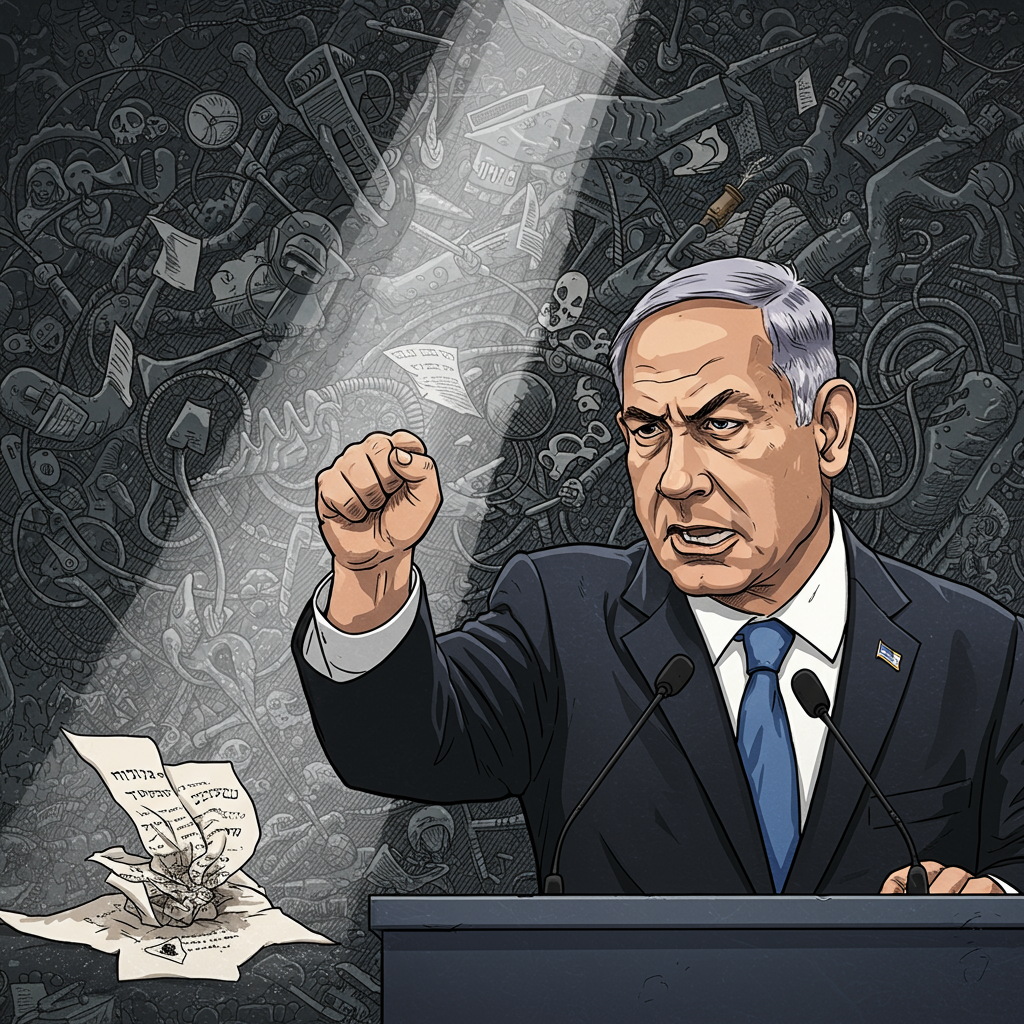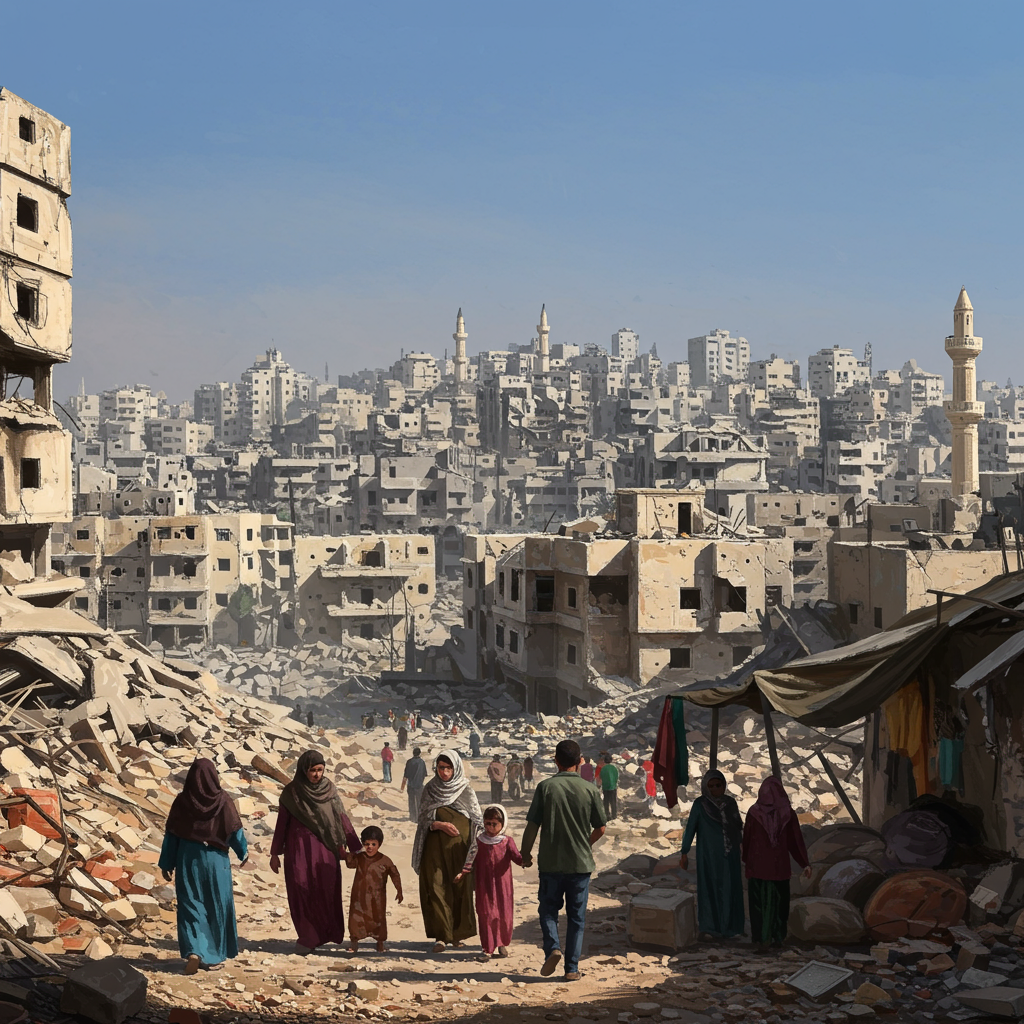A controversial report alleging israeli soldiers were ordered to shoot at Palestinians seeking humanitarian aid in Gaza has been emphatically rejected by Israeli Prime Minister Benjamin Netanyahu and Defense Minister Israel Katz. They labeled the claims “malicious falsehoods designed to defame” the military. The report from the left-leaning Israeli newspaper Haaretz triggered sharp denials, but it surfaces amid widespread accounts of civilian deaths and injuries near aid distribution points in the war-ravaged territory.
Allegations of ‘Killing Fields’ Near Aid Sites
The Haaretz report, citing multiple anonymous Israeli soldiers, painted a grim picture of conditions near aid distribution areas. Soldiers reportedly claimed commanders instructed them to fire upon unarmed Palestinian crowds approaching food sites, even when those crowds posed no immediate threat. these incidents, according to the soldiers quoted, have occurred since late May. One soldier chillingly described the scenes as a lethal game of “red light, green light” and characterized the locations as “killing fields.” The report detailed the alleged use of machine guns, grenade launchers, and mortars without crowd-control measures, only direct gunfire. Another soldier suggested commanders were operating outside established legal parameters.
Israeli Prime Minister Benjamin Netanyahu and Defense Minister Israel Katz swiftly issued a joint statement. They vehemently denounced the Haaretz piece as a “blood libel.” The statement described the report as containing “malicious falsehoods” intended to defame the Israel Defense Forces (IDF). They asserted the IDF is “the most moral military in the world.”
Military Response and Civilian Harm Investigations
In response to the serious allegations published in Haaretz, the Israeli military acknowledged investigating incidents where civilians were harmed. However, the IDF spokesperson specifically rejected accusations of deliberate fire toward civilians. The military maintains its soldiers have only fired warning shots. These shots, the IDF claims, are intended solely to control crowds near aid distribution points. The Haaretz article noted that a military body was reportedly asked to investigate potential war crimes related to incidents at these sites.
Palestinian witnesses offer a starkly different perspective. They report Israeli troops opening fire at crowds gathered on roads leading to aid locations. Thousands of Palestinians walk for hours through Israeli military zones to reach these hubs. Witnesses describe encountering heavy barrages of fire as they attempt to approach. This conflicts directly with the Israeli military’s assertion of only firing warning shots.
Humanitarian Crisis and Deadly Aid Distribution
The backdrop to these allegations is a dire humanitarian crisis in Gaza. Tens of thousands of Palestinians face severe food shortages. This desperation follows an extensive 8.5-month siege imposed by Israel. The blockade prevented essential supplies like food, water, and medicine from entering Gaza. While Israel later resumed some aid entry, the amounts remain significantly below the need.
According to Gaza’s Health Ministry, the consequences of seeking aid have been devastating. More than 500 Palestinians have reportedly been killed. Additionally, hundreds, potentially over 4,000, have been wounded while trying to obtain food. These casualties have occurred since the newly formed Gaza Humanitarian Foundation (GHF) began distributing aid about a month ago.
The Role and Criticism of the GHF
The Gaza Humanitarian Foundation (GHF) is central to the current aid distribution efforts. The organization is backed by an American private contractor. It receives $30 million in funding, reportedly from the Trump administration. The GHF distributes food boxes at four locations within Gaza. These sites are mainly in the far south of the territory.
These GHF sites are described as fenced-off facilities located within expansive military “red zones.” Israeli troops are positioned in these zones. Palestinians have been instructed not to be there except during the GHF’s operational times. These operating times are often erratic and short. People travel long distances to reach the sites. Reports indicate food is grabbed without vetting or ID checks. Some witnesses and survivors told NPR that food from GHF sites has appeared on the black market at exorbitant prices.
The GHF itself stated it was unaware of specific shooting incidents. However, it acknowledged the gravity of the allegations. The organization called on Israel to investigate the claims thoroughly. It urged Israel to publish the findings transparently and promptly. The GHF also challenged a specific report from the director of Al-Shifa Hospital regarding bodies arriving from one of their sites. They referred to operational challenges as a “learning loop.”
International Condemnation and Calls for Change
The current aid distribution system in Gaza has drawn severe criticism from international bodies and aid organizations. Doctors Without Borders (Médecins Sans Frontières – MSF) has been particularly vocal. MSF publicly condemned the GHF system. They labeled it “a slaughter masquerading as humanitarian aid.” MSF refuses to work with the GHF. The organization argues that aid distribution should never be controlled by a warring party.
MSF clinics in Gaza reportedly treat numerous patients daily. These patients have sustained injuries near GHF distribution sites. One MSF clinic receives 10 or more such patients daily. Many suffer severe wounds but lack necessary life-saving treatments like blood transfusions and surgery.
Dr. Adil Husain, a volunteer physician working at Nasser Hospital in southern Gaza, corroborated these reports. He described treating people shot near GHF locations daily. Dr. Husain called the situation a “horror movie on repeat.” He detailed severe injuries including abdominal and head wounds. Patients included young boys and adults, often carrying empty bags meant for food. He shared images showing a teenager who died after a head shot and two young boys who were severely injured—one losing an eye, the other paralyzed—allegedly shot by the Israeli military near GHF sites while trying to get food.
United Nations Secretary-General António Guterres has also weighed in forcefully. He urged leaders to show “political courage” and agree to a ceasefire. Guterres described the humanitarian crisis in Gaza as being of “horrific proportions.” He stressed that the act of searching for food “must never be a death sentence.” The UN chief advocated for a return to the UN’s long-established aid distribution system. He stated that “any operation that channels desperate civilians into militarized zones is inherently unsafe. It is killing people.”
Broader Context of the Conflict
The situation surrounding aid distribution occurs within the wider context of the ongoing Middle East conflict. The current war began after a Hamas-led attack on southern Israel on October 7, 2023. That attack killed around 1,200 people and took approximately 250 hostages, with about 50 reportedly still held captive in Gaza.
Since the war’s beginning, casualties in Gaza have been immense. According to the Gaza Health Ministry, more than 36,000 people have been killed and over 82,000 injured. The ministry does not distinguish between civilians and combatants in its figures. However, it states that women and children make up over half of the reported deaths. Israel maintains its targets are militants. It attributes civilian casualties to Hamas. Israel accuses Hamas of operating within densely populated civilian areas.
Reports of deaths from Israeli strikes continue alongside those near aid sites. Officials at Awda Hospital in Nuseirat reported six people killed and 10 wounded recently in strikes near Martyrs Roundabout in the Bureij Camp. Local efforts are also emerging, with an association of Gaza clans and tribes initiating independent actions to guard aid convoys to prevent looting.
Frequently Asked Questions
What was the specific Haaretz report about and what was Netanyahu’s response?
The Israeli newspaper Haaretz reported, citing anonymous soldiers, that Israeli soldiers were ordered to fire at unarmed Palestinians seeking aid near distribution sites in Gaza. Israeli Prime Minister Benjamin Netanyahu and Defense Minister Israel Katz vehemently denied the report. They called it a “blood libel” and “malicious falsehoods” intended to defame the Israeli military. The military stated it is investigating incidents but denies deliberate fire on civilians, claiming only warning shots are used.
What is the situation like for Palestinians trying to get aid in Gaza, according to various reports?
Reports indicate the situation is extremely dangerous. According to Gaza’s Health Ministry, over 500 Palestinians have been killed and potentially over 4,000 wounded seeking food near distribution sites. Palestinian witnesses describe Israeli troops firing on crowds and encountering heavy barrages. Aid groups like Doctors Without Borders condemn the system as deadly, reporting treating patients daily with severe injuries sustained near the sites, including head shots and paralysis, while attempting to get food.
Why is the current aid distribution system in Gaza controversial, and what alternatives are suggested?
The current system relies partly on the new GHF, an American-backed organization, operating sites in military “red zones.” Critics, including aid groups and the UN, argue it’s inherently unsafe and controlled by a warring party. Doctors Without Borders calls for it to be shut down. The UN Secretary-General urges a return to the UN’s established aid distribution system, which he says is proven effective and necessary to prevent the search for food from being a death sentence.
Conclusion
The report from Haaretz has brought into sharp focus the perilous conditions faced by Palestinians desperately seeking food in Gaza. While Israeli leadership strongly denies allegations of orders to shoot civilians, the mounting casualties and witness accounts near aid distribution points paint a grim picture. The current aid delivery system, managed partly by the GHF, faces severe condemnation from humanitarian organizations and the United Nations, who point to its deadly consequences and call for a return to established, independent aid mechanisms. As the humanitarian crisis deepens, the conflicting narratives surrounding aid access underscore the urgent need for transparency, accountability, and effective, safe passage for life-saving assistance into and throughout Gaza.




